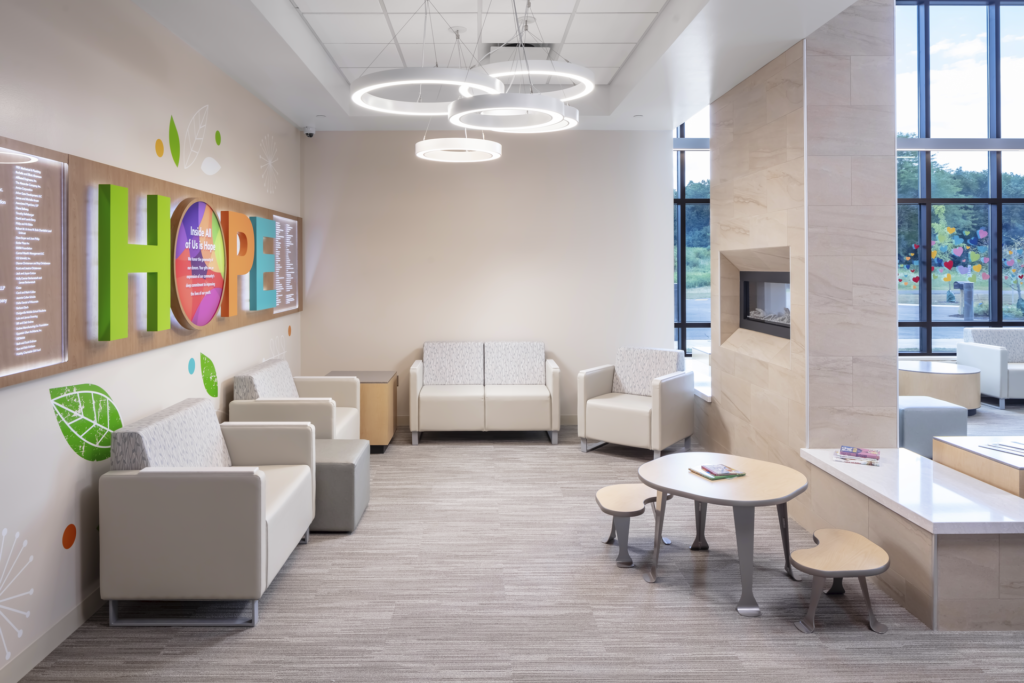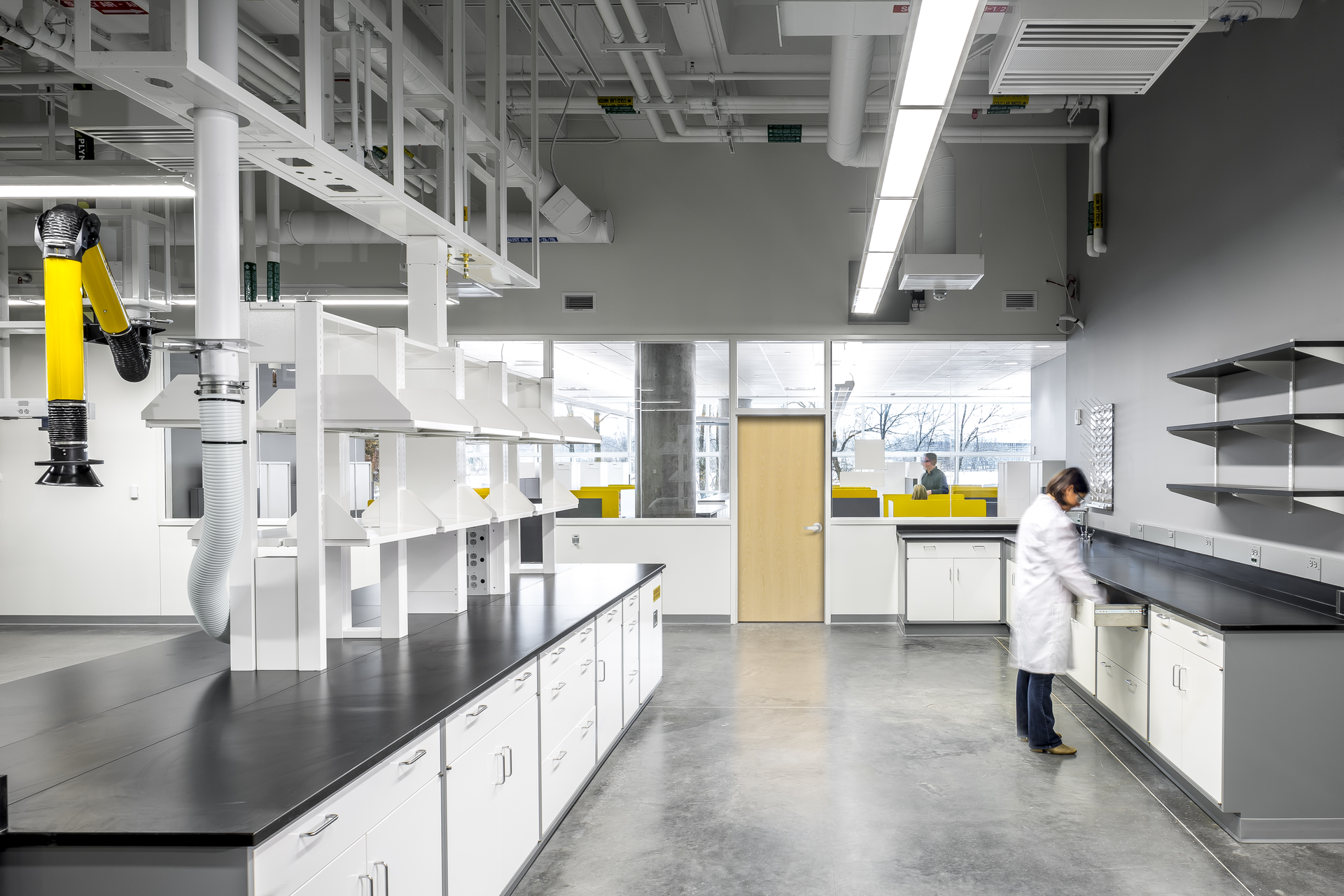Social services and mental health organizations face challenges on numerous fronts—from balancing safety and comfort, to helping clients create community as they work towards their individual therapeutic goals, to effectively tailoring the right level of support for each client. This is especially true for residential facilities, where staff work tirelessly to connect individuals to the services they so desperately need. By focusing on the person first in order to truly understand and support their needs, we can utilize impactful design to support those efforts.
Human-Centered Safety®
After decades of experience designing for holistic mental health and wellness, BWBR firmly believes that to promote therapeutic behaviors, we have to see the environment from a human-centered lens. By creating spaces that promote safety and flexibility and putting appropriate levels of choice and control back into the hands of residents, therapeutic housing can help foster healing and recovery. Intentional design can make a real difference in the lives of people experiencing mental illness, addiction, and/or homelessness to encourage positive outcomes.
Our human-centered approach supports trauma-informed care through design, creating a healing environment that embodies the mission and treatment goals of the client organization. Human-Centered Safety® helps to shift the emotional response a therapeutic environment evokes – from confrontational to inviting, cold to comforting, and alienating to approachable. Person-centered, trauma-informed treatment practices are essential when working to prioritize and address the complex issues many residents face—whether that is shelter from an abusive partner, a space free of drugs and other substances, or simply an environment where they can rest in safety.
The Power of Choice
But an optimal therapeutic setting must provide more than safety, creating a caring environment that respects the private issues surrounding care while still creating the warm and welcoming atmosphere that everyone deserves. Incorporating elements of daylight, nature, and beauty help reinforce the inherent worthiness of every resident and provide a home that is familiar and safe. By honoring their personal choices and providing some ability to control their own environment, the space can affirm residents’ dignity while still supporting staff needs.
For example, residents under stress or in crisis require more personal space, and crowding can be a source of additional stress. So, while smaller units are more space efficient, they can be less effective for occupants, and designers must balance the needs of first costs and long-term usability while keeping the needs and wants of the resident firmly centered. This extends to shared spaces, which may need to be larger than in non-therapeutic housing and carefully planned to reduce potential triggers for aggression while actively promoting regulated emotional and mental states.
From Housing to Home
Space that supports community is also important, in order to create an experience apart from the clinical experience. As staff support residents in navigating a period of transition and change, a quiet, positive, and respectful environment supplies crucial support. Providing residents with choices between quiet and active spaces, amenities like self-serve refreshment stations, and opportunities to join activities without mandating them can empower folks to settle in and find their people according to their own needs and interests. Adding color and creativity through intuitive and welcoming wayfinding or theming for therapeutic spaces can also help people both find and identify with their space.
For one of our social services clients, supporting two generations was a touchstone, so that informed a multi-generational approach to design to engage even the youngest visitors. For another, incorporating cultural design language cues relevant to the population being served was a way to help residents feel seen and included. An inpatient mental health unit design focused around a central dayroom with comfy seating, a wall mural, and activity tables, while also providing homelike patient rooms with private bathrooms.
Engaging Everyone
In order to create spaces like these, it is essential for the project team to make sure all key stakeholders are at the heart of the design. This means listening to the real needs of staff, residents, and administration, and not presuming to know what’s best from the outside. BWBR is committed to deep stakeholder engagement and an inclusive design process that brings together our experience from across our healthcare, worship, and community projects with the unique voices of those who will be using the space, making sure everyone has a place at the table.
For example, we heard from both residents and staff in mental health facilities about the importance of having a place where resident belongings can be safely stored when they are in the emergency department (ED). While most facilities have a central storage room, this made residents nervous. Knowing this allowed us to design a safe space for belongings in the treatment room, making residents much more comfortable that their belongings, which may be all they own, will be safe. In another listening session, our design team heard that many residents associated the colors blue and white with clinical, rather than calming environments, partly because of their common use across mental health spaces. Understanding their perspective, rather than assuming, helped us to make easy, meaningful decisions to dislodge those associations.
A Room of One’s Own
Therapeutic housing has to serve so many purposes—meeting basic human needs, providing access to vital services, helping to create communities of healing—that the only way to successfully approach this kind of project is with an open heart and an open mind. By truly listening to residents, these spaces have the power to help them create new possibilities, improved health outcomes, and above all encourage a successful transition to permanent housing.








